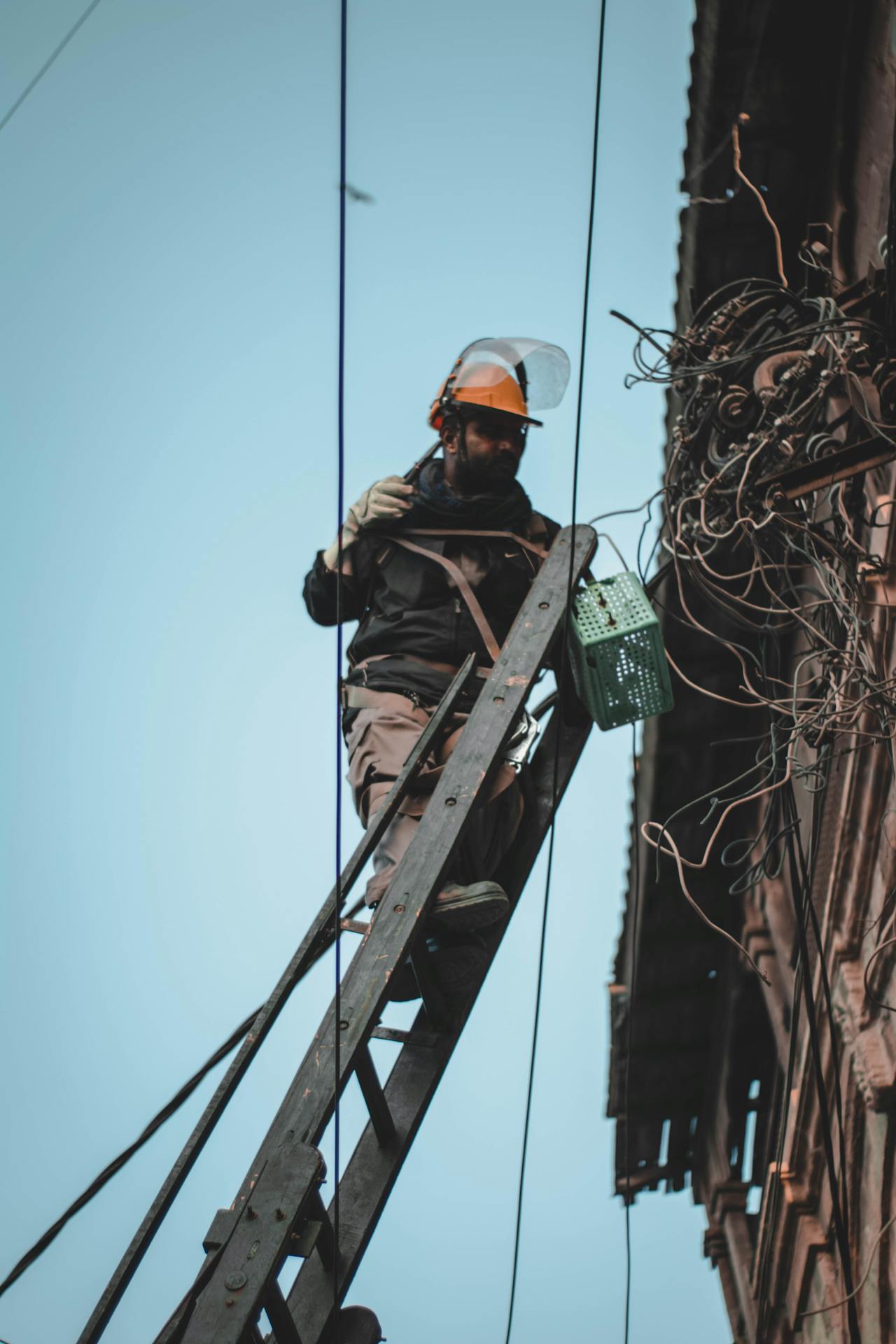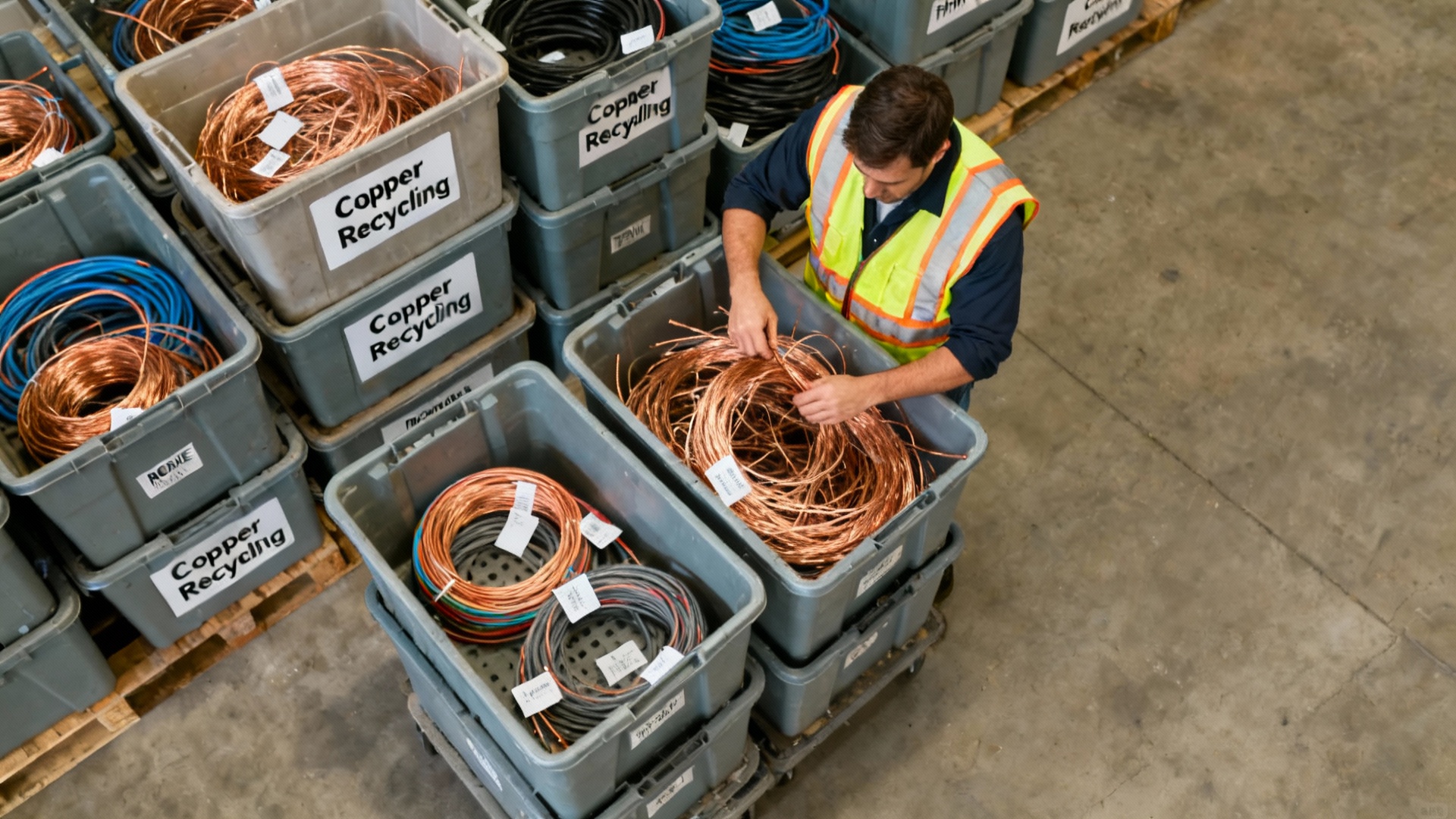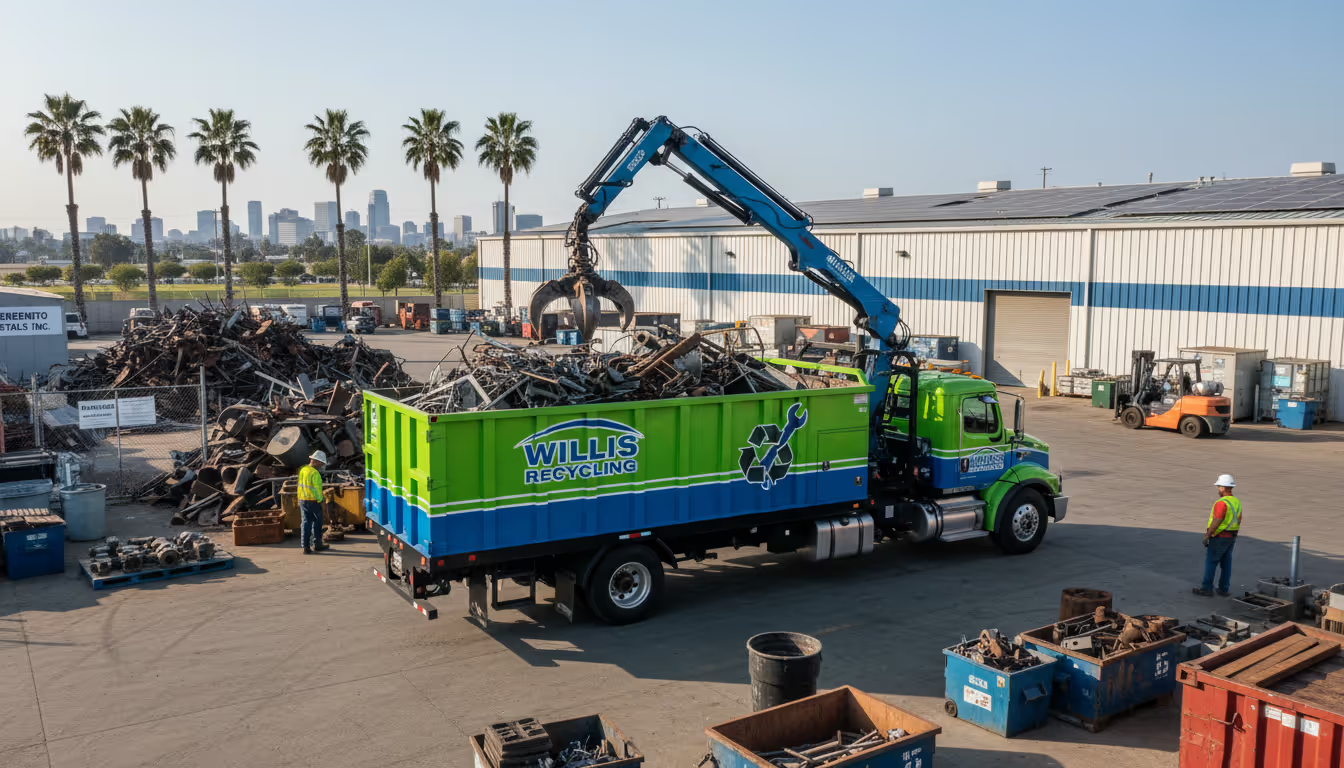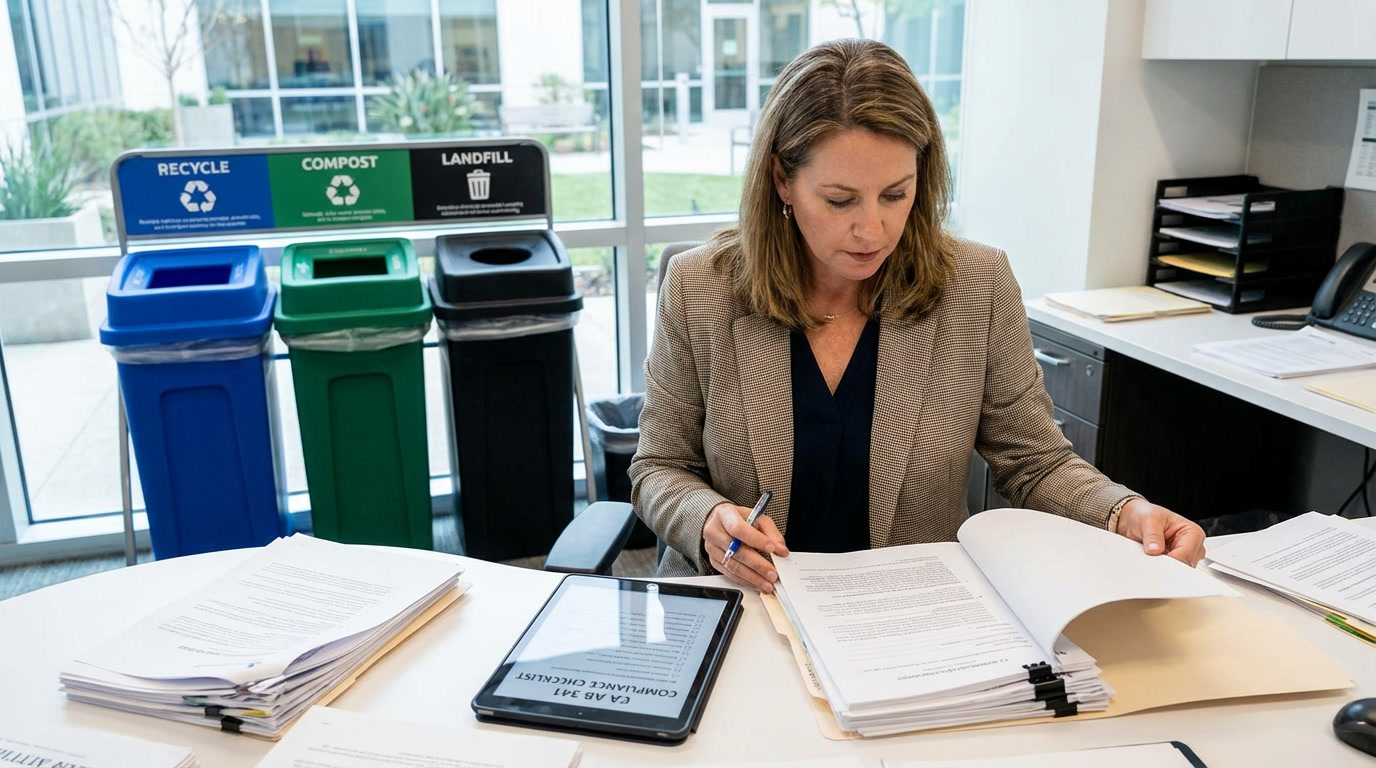That pile of wire scraps in your van isn't trash—it's money. But whether you're getting $1.40 per pound or $3.60 depends on wire type, how you stage it, and whether stripping makes sense for your operation.
Working in Sacramento's electrical contracting scene means you're generating wire waste constantly. Residential remodels produce bins of ROMEX. Commercial retrofits create pallet loads of THHN and service cable. The question isn't whether to recycle (you should), but how to do it without losing money on labor. For many contractors, insulated wire recycling Sacramento services play a major role in maximizing scrap value without wasting labor hours.
This guide covers what electricians actually encounter: real pricing by wire type, the strip-or-don't calculation, California's payment regulations, and when calling for pickup beats driving to the yard yourself.
Current Sacramento Pricing by Wire Type (November 2025)

Insulated wire pricing follows copper content. The more copper relative to insulation, the higher your payout. Here's what Sacramento yards are paying right now. These insulated wire recycling Sacramento price ranges help contractors estimate scrap revenue accurately.
ROMEX and Standard Building Wire
Your everyday 12/2 and 14/2 house wire pays $1.30 to $1.50 per pound with insulation intact [1]. That 100-pound pile sitting in your storage unit? Worth about $140 as-is.
ROMEX recovers roughly 75% copper by weight. Strip that same 100 pounds down to bare bright copper (75 pounds after removing insulation) and you're looking at $3.50 to $3.70 per pound [2]. The math says $270 versus $140—a $130 difference. But here's where it gets real: how long does stripping 100 pounds of ROMEX take you? Six hours? Eight?
Do that calculation with your actual hourly rate. If you bill at $75 per hour, spending eight hours stripping wire to make an extra $130 means you're working for $16.25 per hour. Most electricians I know would rather take the hit and stay on paying work.
THHN and Single-Conductor Wire
Thinner insulation means more copper per pound. THHN typically runs $1.50 to $1.85 per pound as-is [3], with about 82% copper recovery. The pricing gap between insulated and stripped narrows slightly here because you're already getting paid for more copper content.
For small commercial jobs where THHN is your primary waste, selling as-is makes even more sense. The time investment to strip rarely justifies the return unless you're processing serious volume—think 500+ pounds.
Heavy-Gauge Service Cable (500-750 MCM)
Now we're talking. Big feeder cables with minimal insulation pay $2.50 to $2.85 per pound with 90% copper recovery [4]. At this grade, you're already getting close to bare copper pricing without any labor.
Heavy cable is also easier to strip if you've got the right tools. The insulation comes off in sections, and you're dealing with solid conductors instead of fine strands. For electrical contractors doing service upgrades and panel replacements, this is where the real value accumulates.
Low-Grade Wire and Extension Cords
Appliance cords, computer cables, anything with double insulation—expect $0.85 to $1.15 per pound [5]. These sit at 55% copper recovery or less. Unless you're accumulating hundreds of pounds, this stuff barely covers the fuel to haul it to a yard.
The Stripping Decision: When It Actually Makes Sense
Every electrician has their own threshold, but the pattern holds across the industry.
Strip when:
You've got 300+ pounds of heavy-gauge cable (500 MCM and up)
You own mechanical wire strippers, not just utility knives
You're between contracts with available shop time
The wire is clean, dry, and accessible—not tangled in mud and junction boxes
Don't strip when:
Mixed residential wire under 200 pounds total
Your billable rate exceeds $50 per hour
Wire is contaminated, wet, or tangled with non-copper materials
You need cash flow now and storage space cleared
Some shops make stripping work. They've invested in granulator equipment, they accumulate wire for months, and they've built efficiency into the process. But for most one-truck or small crew operations, the labor cost exceeds the return. You're running a service business, not a wire processing operation.
The other factor: copper prices fluctuate. Check current rates before making volume stripping decisions. November 2025 has copper relatively stable around $4.50 per pound on commodity markets [6], but that changes monthly. What makes sense at $4.50 might not work at $3.80.
Staging Wire to Maximize Value

How you present material affects what you're paid. Sacramento yards price cleaner loads higher because they require less sorting on their end. Efficient staging is one of the most overlooked parts of insulated wire recycling Sacramento contractors should focus on.
Keep wire types separated. ROMEX in one pile, THHN in another, service cable separate from building wire. Don't mix appliance cords with construction wire. Mixed loads typically get downgraded 15-20% at the scale [7].
Use reels, totes, or gaylord boxes instead of loose piles. Wind cable onto reels if you've got them. Rigid totes work better than trash bags or loose tangles in a truck bed. Presentation signals professionalism, and recyclers reward it with better pricing.
Remove junction boxes, connectors, and conduit fittings before weighing. A few minutes pulling plastic boxes off wire ends can bump you from #2 copper pricing to #1 copper—that's a $0.30 per pound difference that adds up fast on a 500-pound load [8].
Keep everything dry. Muddy, wet wire weighs more but pays less. Sacramento yards deduct for contamination, and wet insulation throws off accurate copper content assessment. If you're pulling wire from an outdoor demo, let it dry in your shop a day or two before transport.
Document your loads with photos. California requires yards to keep detailed transaction records for copper [9], and having your own documentation protects you if weights or grades get disputed at the scale. Take a quick photo of staged wire before you load it, especially on larger jobs.
California's Payment Rules: The 3-Day Hold
You can't walk into a Sacramento scrap yard, drop copper wire, and get cash anymore. California law requires a mandatory three-business-day hold on all copper wire transactions exceeding $20 [10].
Payment comes via non-transferable check. Either the yard mails it to your business address, or you pick it up in person after the waiting period. Plan cash flow accordingly—this isn't same-day revenue.
These anti-theft regulations also require ID verification and detailed record-keeping. Bring your driver's license, business license, and be prepared to provide vehicle information. First-time customers might face additional verification steps.
The regulations exist for good reason. Copper wire theft from construction sites and utility infrastructure costs California millions annually [11]. Legitimate contractors shouldn't have issues, but the payment delay is non-negotiable.
Mobile Pickup: When Does It Make Financial Sense?
Most residential electricians self-haul to local yards. You're already driving between job sites, and 150 pounds of wire fits in the van.
Mobile pickup makes sense at different thresholds depending on your operation size and job type. Commercial contractors managing warehouse decommissions or data center renovations might accumulate 1,000+ pounds of cable. At that volume, mobile service becomes efficient.
Many mobile services specializing in insulated wire recycling Sacramento offer convenient pickup for high-volume generators.
Typical minimums run 300-500 pounds for on-site pickup in Sacramento. Service response times vary by season—expect 3-5 business days during normal periods, longer during peak construction season in spring and summer [12].
Mobile pickup usually carries a premium. Yards need to justify the truck roll, labor, and portable scale equipment. That premium typically runs 5-10% off the per-pound rate you'd get dropping material at their facility. But if mobile service saves your crew four hours of loading, driving, and waiting at the yard, the math often works in your favor.
Consider mobile pickup for:
Facility decommissions with 1,000+ pounds of mixed wire and cable
Projects requiring Certificate of Recycling for environmental compliance documentation
Jobs where crew time savings exceed the pickup premium
Multi-site commercial work where coordinating deliveries makes sense
For smaller volumes, self-haul remains more economical. Accumulate wire in your shop until you hit commercial minimums, then make one trip rather than multiple small runs.
What Sacramento Electricians Should Actually Do

Here's the practical framework based on volume and wire type:
Under 100 pounds total: Keep a corner bin at the shop. Accumulate until you hit pickup minimums or have a reason to visit a yard anyway. Don't make special trips.
100-300 pounds of residential wire: Sort by type (ROMEX separate from THHN separate from everything else), stage in totes, drop it at a local yard on your way between jobs. Don't bother stripping. Your time is worth more on the next service call.
300-1,000 pounds of mixed commercial wire: Sort into three categories—heavy-gauge, THHN, and everything else. Get quotes from multiple Sacramento yards if you've got time. Price differences of $0.10 per pound matter at this volume. Consider mobile pickup if it saves crew time.
1,000+ pounds or large service cable: Get competitive quotes. At this volume, shopping around pays off. Mobile pickup usually makes sense. If you've got heavy cable (500 MCM and up) and mechanical stripping equipment, run the numbers on whether stripping is worth it for this particular load.
Storage matters too. Wire accumulates fast on busy shops. If you're tripping over bins of scrap, it's time to clear it out regardless of whether you've hit optimal volume. Shop space has value.
Making This Work for Your Operation
The electricians who maximize wire recycling value treat it as part of business operations, not an afterthought. They:
Build accumulation into workflow. Crew knows where wire goes at the end of each job. ROMEX bin, THHN bin, heavy cable separate. Sorting happens in real-time instead of spending a Saturday sorting through six months of mixed wire.
Track volume. Know approximately how much wire you're generating monthly. This lets you schedule pickups or yard runs efficiently instead of reacting when storage fills up.
Establish yard relationships. Pick one or two yards, become a known customer. Regular commercial accounts often get better pricing and sometimes pickup accommodations that one-time dropoffs don't receive.
Document everything. Photos of staged loads, copies of weight tickets, transaction records. California requires yards to keep records for two years [13]—you should too.
Calculate actual hourly return. If you're spending time stripping wire, know what you're actually earning per hour. Most electricians overestimate the value and underestimate the time investment. Track it once honestly, then decide if it fits your operation.
The bottom line: insulated wire recycling should support your electrical contracting business, not become a side business itself. Make decisions that keep you focused on service work where your expertise commands premium rates.
Sacramento offers strong infrastructure for insulated wire recycling Sacramento contractors rely on to turn scrap wire into consistent revenue without disrupting operations.
Frequently Asked Questions
Should I strip insulated wire before recycling?
For most electricians, no. While bare bright copper pays $3.50-$3.70/lb versus $1.30-$2.85/lb for insulated wire, the labor investment rarely justifies the return on typical volumes. Calculate your actual hourly rate: if stripping 100 pounds of ROMEX takes 6-8 hours for a $130 gain, you're earning $16-$22 per hour. Most contractors bill at $50+ per hour. Stripping makes sense for large volumes (300+ pounds) of heavy-gauge cable when you have mechanical equipment and available shop time between jobs.
How long does payment take for copper wire in Sacramento?
California law requires a mandatory 3-business-day hold on all copper wire transactions over $20. You'll receive a non-transferable check either mailed to your business address or available for in-person pickup after the waiting period. This anti-theft regulation means wire recycling isn't a same-day cash source—plan your business cash flow accordingly.
What's the minimum for mobile wire recycling pickup in Sacramento?
Most mobile recycling services require 300-500 pounds minimum for on-site pickup. Response times typically run 3-5 business days in Sacramento proper. Mobile pickup usually carries a 5-10% premium over self-haul rates, but saves crew time on large jobs. It makes economic sense for commercial projects with 1,000+ pounds, facility decommissions, or when crew time savings exceed the pickup premium.
How should I stage wire to get the best price?
Separate wire by type—don't mix ROMEX with THHN with service cable. Remove junction boxes, connectors, and conduit fittings. Use reels or rigid totes instead of loose piles. Keep everything dry (wet wire pays less). Sacramento yards pay 15-20% more for well-organized loads because they require less sorting. Taking photos before transport documents your load if weight or grade disputes arise later.
What documentation do I need to recycle copper wire in California?
You'll need valid government-issued ID, your business license, and vehicle license plate information. California requires scrap yards to collect detailed seller information, maintain transaction records for two years, and document all copper wire purchases. First-time customers may face additional verification. These anti-theft regulations protect legitimate contractors but require patience and proper documentation.
What's ROMEX wire actually worth per pound?
Current Sacramento rates (November 2025) for ROMEX range from $1.30-$1.50 per pound with insulation intact. ROMEX contains approximately 75% copper by weight. If you strip it to bare bright copper, those same pounds are worth $3.50-$3.70 per pound—but you lose 25% of weight to insulation removal and invest significant labor time. Most contractors find selling ROMEX as-is more economical.
Can I recycle extension cords and appliance wire?
Yes, but low-grade wire (extension cords, appliance cables, anything with double insulation) only pays $0.85-$1.15 per pound with 55% or less copper recovery. Unless you're accumulating hundreds of pounds, this material barely covers fuel costs to transport it. Consider accumulating low-grade wire until you have commercial volumes or combining it with higher-value wire for a single trip.
Do Sacramento yards buy THHN wire?
Yes. THHN and single-conductor wire pays $1.50-$1.85 per pound as-is, with approximately 82% copper recovery. The thinner insulation relative to copper mass means THHN commands better pricing than ROMEX even without stripping. For commercial electrical work where THHN is your primary wire type, selling as-is almost always makes more sense than stripping unless you're processing 500+ pounds.
Works Cited
[1] Scrap Stop — "Insulated Copper Wire." https://myscrapstop.com/scrap-price/insulated-copper-wire. Published: March 2024. Accessed: November 20, 2025.
[2] Okon Recycling — "Learn the Factors that Influence Current Scrap Metal Copper Prices." https://www.okonrecycling.com/industrial-scrap-metal-recycling/copper-recovery/scrap-metal-copper-prices/. Published: September 21, 2025. Accessed: November 20, 2025.
[3] Cable Management — "Current Scrap Pricing." https://cablemanagementusa.com/current-pricing/. Published: June 11, 2025. Accessed: November 20, 2025.
[4] Rockaway Recycling — "Insulated Cable Scrap Prices." https://rockawayrecycling.com/metal/insulated-cable/. Published: September 4, 2025. Accessed: November 20, 2025.
[5] Greener Recycling — "Stripping Copper Wire - Is It Worth?" https://forscrap.com/copper-scrap/wire. Published: 2025. Accessed: November 20, 2025.
[6] Scrap Monster — "North American Copper Scrap Prices Dropped Slightly on the Index." https://www.scrapmonster.com/news/scrap-metal-market-reports/north-american-copper-scrap-prices-dropped-slightly-on-the-index-2025-11-14/97779. Published: November 14, 2025. Accessed: November 20, 2025.
[7] Sahd Metal Recycling — "The Ultimate Guide to Recycling Wire in Lancaster, PA." https://recycleyourmetal.com/ultimate-guide-to-recycling-wire-in-lancaster-pa/. Published: March 27, 2025. Accessed: November 20, 2025.
[8] Sutter Metals — "Everything to Know About Copper Recycling." https://www.suttermetals.com/everything-to-know-about-copper-recycling/. Published: February 11, 2025. Accessed: November 20, 2025.
[9] California Department of Justice — "State Statutes Applicable to Copper Wire Theft." https://oag.ca.gov/system/files/media/2025-dle-12.pdf. Published: 2025. Accessed: November 20, 2025.
[10] CMS Metals — "California Recycling Rules and Regulations." https://cmsmetals.com/california-recycling-rules-and-regulations/. Published: 2025. Accessed: November 20, 2025.
[11] LAist — "Newsom Signs Copper Wire Theft Bill." https://laist.com/news/transportation/newsom-signs-copper-wire-theft-bill. Published: 2024. Accessed: November 20, 2025.
[12] Okon Recycling — "What Are Copper Wire Recycling Best Practices?" https://www.okonrecycling.com/industrial-scrap-metal-recycling/copper-recovery/copper-wire-recycling-best-practices/. Published: May 13, 2025. Accessed: November 20, 2025.
[13] Okon Recycling — "Scrap Metal Requirements in California: A Quick Overview." https://www.okonrecycling.com/industrial-scrap-metal-recycling/specialty-metals/scrap-metal-requirements-california/. Published: September 24, 2025. Accessed: November 20, 2025.


